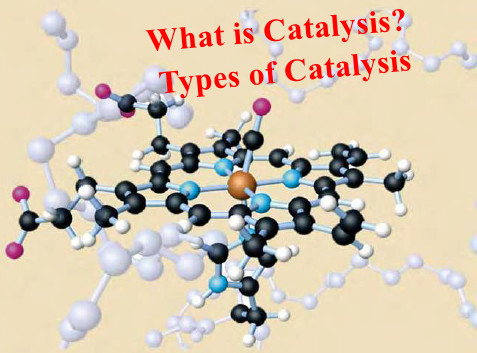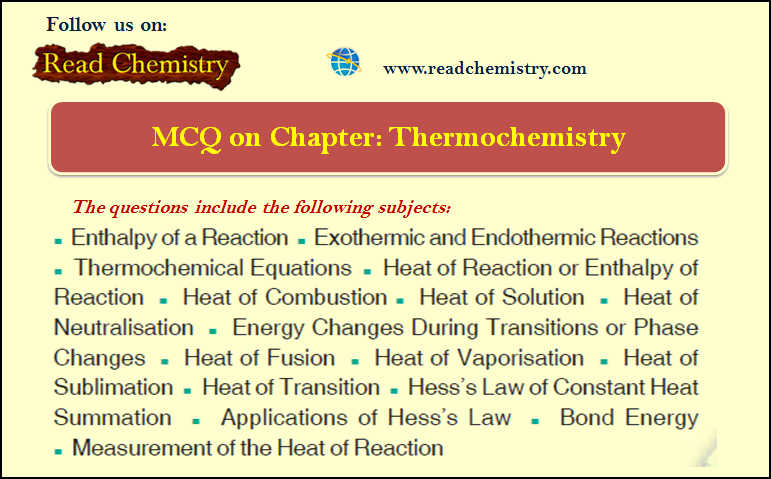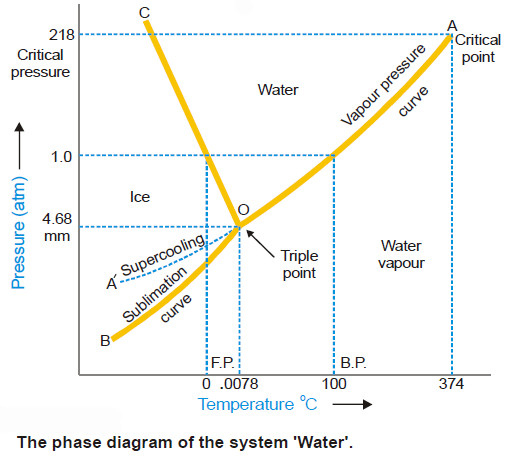Catalysis: Types of Catalysis
– In this topic, we will discuss the Catalysis and The types of catalysis : Homogeneous catalysis – Heterogenous catalysis.
What is Catalysis?
– Berzelius (1836) realised that there are substances which increase the rate of a reaction without themselves being consumed.
– He believed that the function of such a substance was to loosen the bonds which hold the atoms in the reacting molecules together. Thus he coined the term Catalysis (Greek kata = wholly, lein = to loosen).
– There is no doubt that usually a catalyst accelerates a reaction as was originally through by Berzelius. But a number of cases are now known where the catalyst definitely retards (slows down) the rate of reaction.
– A catalyst is defined as a substance which alters the rate of a chemical reaction, itself remaining chemically unchanged at the end of the reaction. The process is called Catalysis.
– As evident from the above definition, a catalyst may increase or decrease the rate of a reaction.
– A catalyst which enhances the rate of a reaction is called a Positive catalyst and the process Positive catalysis or simply Catalysis.
– A catalyst which retards the rate of a reaction is called a Negative catalyst and the process Negative catalysis.
– We will first proceed to discuss ‘positive catalysis’ or catalysis as it is commonly designated.
Types of Catalysis
– There are two main types of catalysis :
(a) Homogeneous catalysis
(b) Heterogenous catalysis
– Also, there is a third types of catalysis known as Enzyme catalysis which is largely of biological interest. This will be discussed separately at a later stage.
Homogeneous Catalysis
– In homogeneous catalysis, the catalyst is in the same phase as the reactants and is evenly distributed throughout.
– This type of catalysis can occur in gas phase or the liquid (solution) phase.
Examples of Homogeneous Catalysis
Examples of Homogeneous Catalysis in Gas Phase
(a) Oxidation of sulphur dioxide (SO2) to sulphur trioxide (SO3) with nitric oxide (NO) as catalyst,
2SO2 (g) + O2 (g) + [NO] (g) → 2SO3 (g) + [NO]
(b) Decomposition of acetaldehyde (CH3CHO) with iodine (I2) as catalyst,
CH3CHO (vapour) + (I2) (vapour) → CH4 (g) + CO (g)
Examples of Homogeneous Catalysis in Solution Phase
– Many reactions in solutions are catalysed by acids (H+) and bases (OH–).
(a) Hydrolysis of cane sugar in aqueous solution in the presence of mineral acid as catalyst, giving glucose and fructose.
C12H22O11 + H2O / H2SO4 → C6H12O6 + C6H12O6 + [H2SO4]
(b) Hydrolysis of an ester (ethyl acetate) in the presence of acid or alkali, giving acetic acid ethanol.
CH3COOC2H5 + H2O + H+ / –OH → CH3COOH + C2H5OH
(c) Decomposition of hydrogen peroxide (H2O2) in the presence of iodide ion (I–) as catalyst,
2H2O2 + I⎯ → 2H2O + O2
Heterogeneous Catalysis
– The catalysis in which the catalyst is in a different physical phase from the reactants is termed
Heterogeneous catalysis.
– The most important of such reactions are those in which the reactants are in the gas phase while the catalyst is a solid. The process is also called Contact catalysis since the reaction occurs by contact of reactants with the catalyst surface.
– In contact catalysis, usually the catalyst is a finely divided metal or a gauze. This form of catalysis has great industrial importance.
Examples of Heterogeneous Catalysis
Some examples of heterogeneous catalysis with reactants in the gas, liquid or the solid phase are listed below.
(1) Heterogeneous catalysis with gaseous reactants (Contact catalysis)
(a) Combination of sulphur dioxide (SO2) and oxygen in the presence of finely divided platinum or vanadium pentoxide, V2O5, (Contact Process for Sulphuric acid).
2SO2 (g) + O2 (g) + [Pt] (solid) → 2SO3 + [Pt]
(b) Combination of nitrogen and hydrogen to form ammonia in the presence of finely divided iron, (Haber Process for Ammonia).
N2 (g) + 3H2 (g) + [Fe](s) → 2NH3 + [Fe]
(c) Oxidation of ammonia to nitric oxide (NO) in the presence of platinum gauze (a stage in manufacture of Nitric acid).
4NH3 (g) + 5O2 (g) + [Pt] (s) → 4NO + 6H2O + [Pt]
(d) Hydrogenation reactions of unsaturated organic compounds are catalysed by finely divided nickel.
H2C=CH2 (g) + H2 (g) + [Ni] (soli) → H3C-CH3 (g) + [Ni]
– Vegetable oils are triesters of glycerol with higher unsaturated acid (oleic acid).
– When hydrogen is passed through the vegetable oils in the presence of nickel, the carbon-carbon double bonds of the acid portions are hydrogenated to yield solid fats (Vanaspati ghee).
(2) Heterogeneous catalysis with liquid reactants
(i) The decomposition of aqueous solutions of hydrogen peroxide (H2O2) is catalysed by manganese dioxide (MnO2) or platinum in colloidal form,
2H2O2 (l) + [Pt] (l) → 2H2O + O2 + [Pt]
(ii) Benzene and ethanoyl chloride (CH3COCl) react in the presence of anhydrous aluminum chloride to form phenyl methyl ketone (C6H5COCH3),
C6H6 (l) + CH3COCl (l) + [AlCl3] (l) → C6H5COCH3 + HCl + [AlCl3]
(3) Heterogeneous catalysis with solid reactants
– The decomposition of potassium chlorate (KClO3) is catalysed by manganese dioxide (MnO2).
2KClO3 (s) + [MnO2] (s) → 2KCl + 3O2 + [MnO2]








